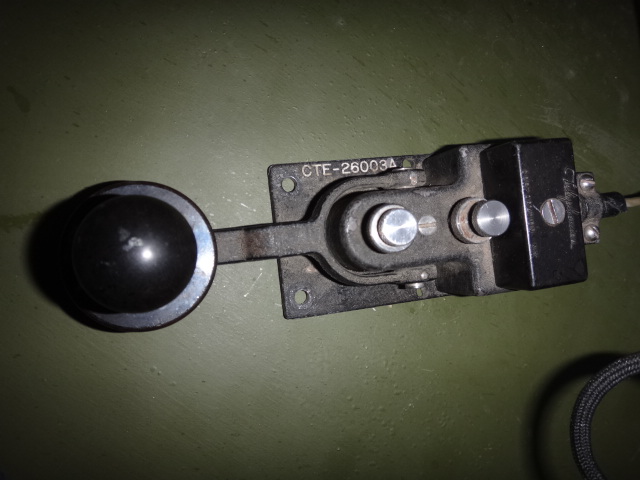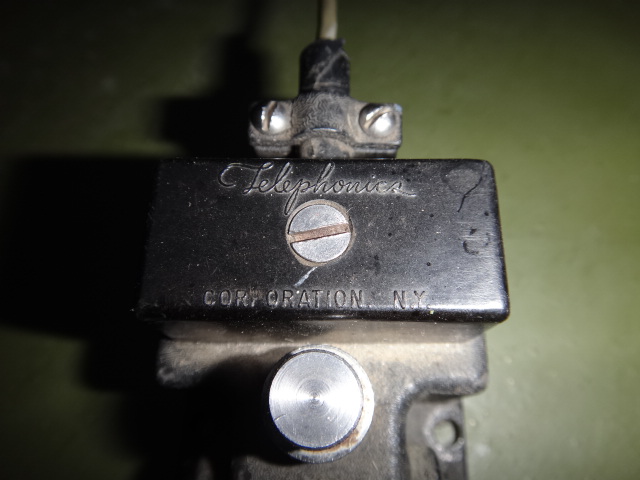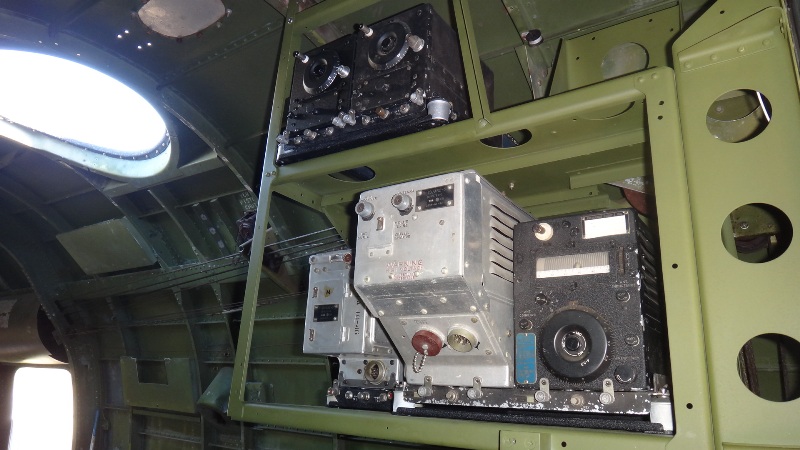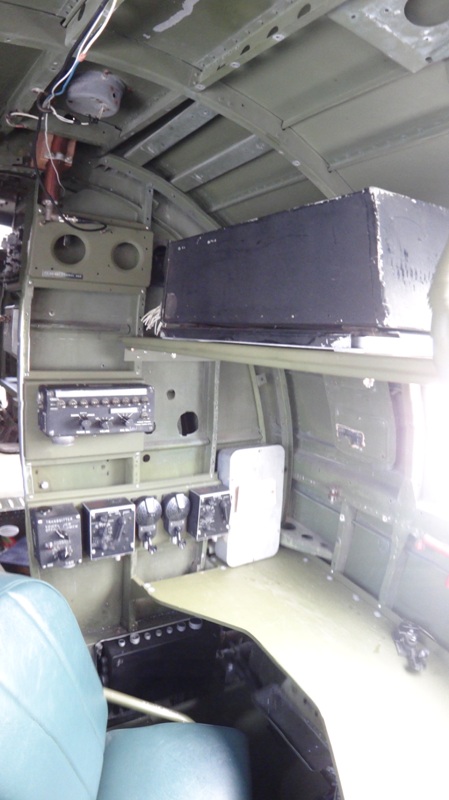k5dh wrote:
Great stuff, Taigh! I love how you and your team are doing things in such an authentic manner. Very commendable! Cute kitty, too.
Glad to see you have the PayPal account set up. I'll be using it soonly.
 EDIT: You're now $100 closer to finishing!
EDIT: You're now $100 closer to finishing! Coupla silly questions:
1. What kind of lubricant are you using for your dynamotor bearings? I have several dynamotors that need to be overhauled properly and I'm open to suggestions for some kind of modern lubricant that's readily available and doesn't cost a fortune.
2. Just out of curiosity, who made your flameproof key? It's a Bendix design, but they were made by various companies including James Bunnell (CJB26003A), Moulded Insulator Company (CMI26003A), Telephonics (CTE26003A), and others. I have a whole box of those keys, but they're in really rough shape. The JB and MI keys are common as dirt. They must've made a gazillion of 'em. They were still in use on P-3's at least as late as the 1990s.
Rock on, guys 'n gals! (and cat!)

Thanks again for the donation!
Sorry I forgot to reply to your questions.
We use Aeroshell grease 22 for the bearings in dynamotors. 22 is a great high speed aircraft bearing grease that works great through a wide range of temperatures and has other desirable properties. If you want some send me your address and I will mail a vial to you.
Cool information on the explosion proof key. The key I found is Telephonics (CTE). Here are a couple of photos.


I had no idea they were still in use that late. Cool. I have to remove the radio table to install the lamp I found so I will mount the key soon. It looks like it is supposed to have a mic jack on a cord that plugged in to the jack box. Do your keys typically have mic plugs on cords?
Since we are on the subject of radios I thought I would take some time to describe the different radio systems for those who may be interested. Fair warning: radio geek speak coming up which puts most to sleep...
It seemed like the Army and the Navy sure didn't like to get together on, well, anything back in the day. Radios were certainly no exception. I think the Army and Navy were forced to get together on their needs and procurement as they were developing and buying independent radio equipment that was doing basically the same thing the other service was doing. The joint Army Navy (JAN) designation system was developed to solve these problems during WWII and is still in use today.
There are a few different types of radios on the Harpoon that use the JAN system. Most of these systems are also found on many aircraft in one form or another. The most common set is the ARC-5.
In the JAN system ARC breaks down to Airborne Radio Communication. Even though the ARC-5 is using the Joint Army Navy (JAN) nomenclature system it was typically only used by the Navy. The Army had a similar set designated SCR-274N. This is the Army's system and SCR stood for Set, Complete Radio. It is arguable one of the most well known systems because of its post was use and it was often modified by Ham's for amateur radio use. The transmitters and receivers were small and portable and easy to 'upgrade'. ARC-5 is often the name given to the three different similar sets used before and during the war namely ATA/ARA (early Navy system) SCR-274N (Army staple through the war) and the ARC-5 (late Navy). Even though folks refer to all these as ARC-5's they are really three different systems.
The ARC-5 system typically used three different receivers and two transmitters but this number varied widely. Each receiver and transmitter were built for a specific frequency range and they could be easily removed from the mounting rack and replaced with a different radio/band if necessary. The Harpoon had two receivers and three transmitters in operational racks and had storage racks for an additional two receivers and four transmitters. This set was used for short range communication like plane to ground or plane to plane. It was also used for navigation as it could tune in beacons and other early nav equipment. The pilots had control of the ARC-5 through remote tuning heads with flexible shafts and power and volume controls.
Here is a shot of the transmitters and receivers of the ARC-5 in our harpoon:

There are two of the three receivers on the top shelf and the third receiver and two transmitters on the lower shelf. This set also has the VHF transmitter and receiver (silver radios) installed which was used later in WWII. The ARC-5 used its own long wire antenna on the Harpoon from the mast above the radio room to the top of the left vertical stabilizer.
Long range communication was through the Liaison radios namely the ART-13 transmitter (Airporne Radio Transmitter) and the ARB receivers (ARB was from the early Navy designation system). The ART-13 was a technological wonder at the time. Designed by Collins is was compact when compared to the other transmitters of the day and could be remotely used. It had an autotune system that, through a motor drive, would automatically change the frequency by moving all 5 tuning dials to their pre assigned settings. This set was so successful that it was used into the early 1970's.
Here is a shot of our ART-13 (the largest radio) in the right hand mid body rack

The dynamotor below it is used to generate the high voltage power required for the transmitter.
The unit in the upper left in the photo above is the modulator for the ARC-5 system.
The ART-13 used either the long wire antenna from the mast to the right vertical stabilizer or the trailing wire antenna that ran out of the belly on the right side just aft of the radar operator.
The unit on the bottom shelf is the APN-1 (Airborne Radar Navigation) or radar altimeter. This unit would bounce radio waves off of the ground or water for accurate altitude above ground. A great set especially for Navy aircraft trying to let down through the clouds trying not to smack the water. There was a control and an indicator on the pilots instrument panel. The APN-1 used two T shaped antennas mounted on the bottom of the horizontal stabilizer.
On top is a frequency meter used to accurately set the transmitter and receiver. It actually mounts in the forward radio rack and an ARN-8 marker beacon receiver goes in its place.
The ARN-8 (Airborne Radio Navigation) receives 75MC fan beacons used for instrument let down procedures. It is the same system in use today for ILS or instrument landing systems and the fan beacons are called marker beacons. The ARN-8 used a wire antenna mounted to the right bomb bay door.
The control box for the ART-13 and the two ARB receivers are located on the radio operators bulkhead.

On the bottom row of the control heads from the left is the control for the ART-13 then two sets of ARB receiver controls (4 total) with the two coffee grinders in the middle. Coffee grinders refer to the crank to tune controls that resemble coffee grinders.
Above the radio operators table on the right upper side of the photo is the Automatic Direction Finder or ADF receiver. It is actually an Army BC-433 (Basic Component number 433 in the Army designation system) which was a part of the SCR-269G (Set, Complete Radio in the Army system). It is very unusual to see an Army set installed in a Navy aircraft. I still haven't seen the official documentation as to why this was done but my guess is that this was a superior system to the Bendix ADF installed in earlier Navy aircraft including Harpoons. The Army had been using the SCR-269 for a while and the Navy procured the system under the designation ARN-7. The ARN-7 became standard equipment that was used well after WWII and it was essentially the same exact set as the 269. I think that until ARN-7 sets were available the navy installed the Army sets. This is true for other aircraft as well like the PB4Y-2. Anyone have any documentation about this to share?
The ARN-7 used two antennas namely a loop antenna or football shaped antenna mounted on the top of the Harpoon and many other bomber aircraft. The loop was a directional antenna that could be rotated to home in on a signal. The other antenna was a simple wire that was called the sense antenna. The two signals were used to compare and determine the direction to the signal. On the Harpoon the sense antenna was the straight wire from the forward mast to the aft mast.
The other gear is the radar and IFF. The APS-3 (Airborne Radar Search) was a search and targeting radar that could be used for IFF work as well. IFF stands for Identification Friend or Foe. It is the early version of what we call transponders today. The IFF set or APX-2 (Airborne Radar Identification) would send out interrogation and receive responses from other gear. Used with the APS-3 radar the operator could see on his scope if a target was friendly or a foe. The code for the reply was changed daily so if you used an old code you were treated as a foe. Ships, submarines and of course other aircraft had the IFF gear. The IFF was also quite secret as you didn't want the code of the day falling into enemy hands. The transmitter/receiver had explosives installed to destroy the insides of the set during a crash through an impact switch or could be manually set off with a destruct switch. IFF gear is hard to find and we are lucky to have a full set to install in the Harpoon.
That's all for now, time for bed.
_________________
To donate to the PV-2D project via PayPal click here
http://www.twinbeech.com/84062restoration.htmWe brought her from:

to this in 3 months:

Help us get her all the way back

All donations are tax deductible as the Stockton Field Aviation Museum is a 501c3 nonprofit organization. Tell a friend as the Harpoon needs all the help she can get.
Thank you!
Taigh Ramey
Vintage Aircraft, Stockton, California
http://www.twinbeech.com'KEEP ‘EM FLYING…FOR HISTORY!'




